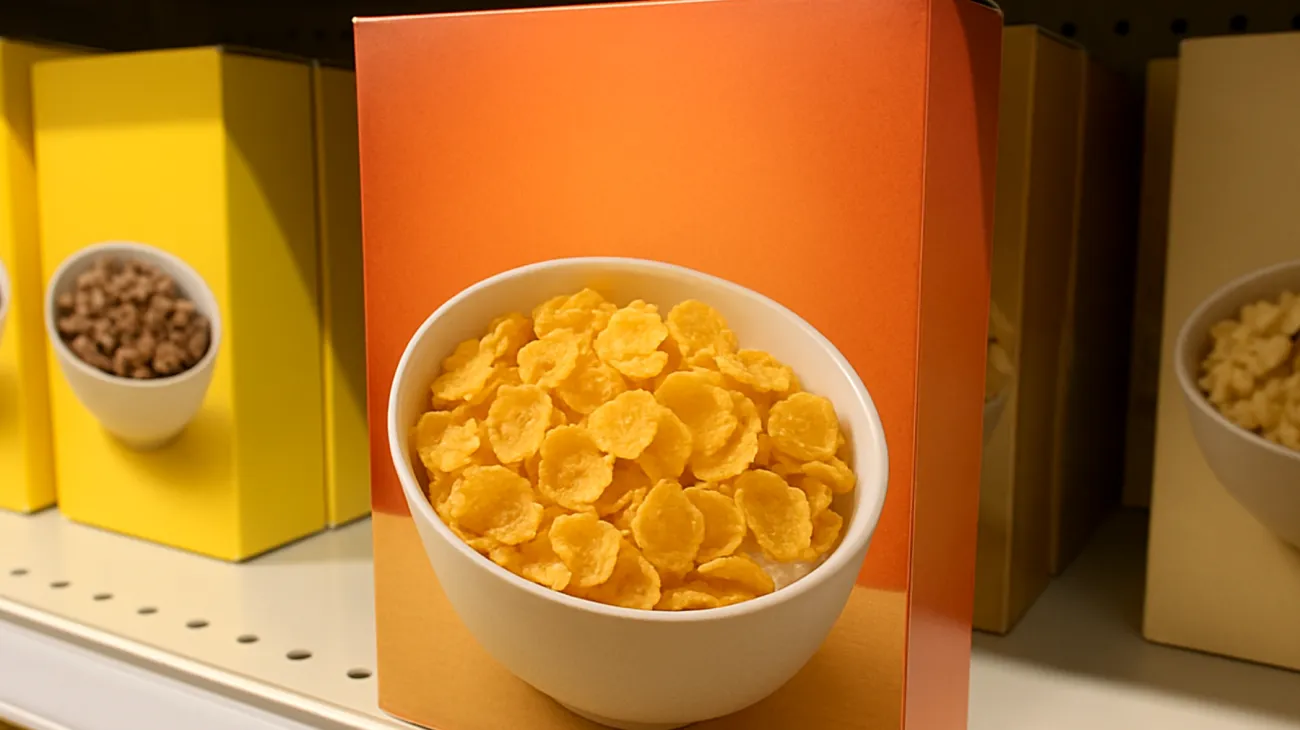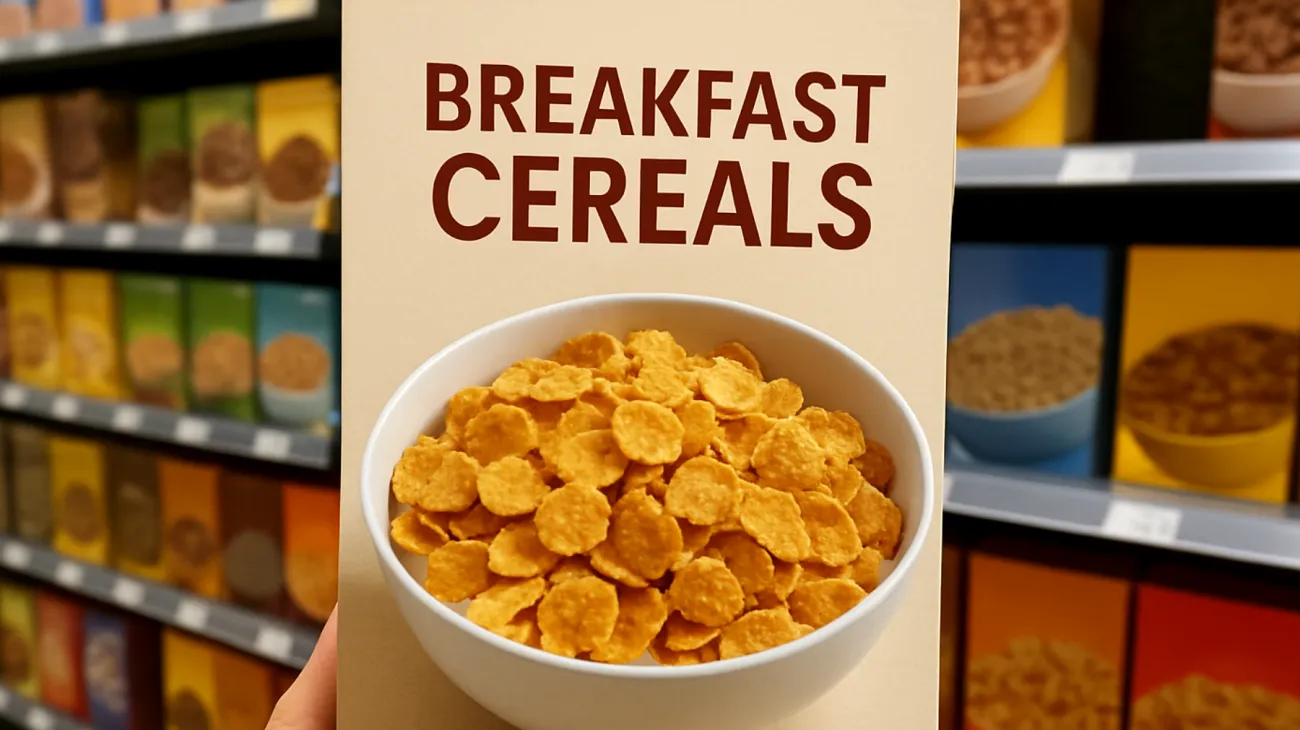Walking down the cereal aisle of any supermarket in the UAE, you’ll notice colorful boxes with cartoon characters and bold promises of “vitamin-enriched” formulas, all designed to catch children’s attention. Behind these appealing facades lies a concerning reality that many parents remain unaware of—breakfast cereals marketed to children often contain high levels of sugar and artificial additives that can negatively influence their health and eating patterns.
The Hidden Sugar Crisis in Your Child’s Bowl
Most parents believe they’re providing a nutritious start to their child’s day when serving breakfast cereal. However, many children’s breakfast cereals contain between 20% and 40% sugar by weight, according to global product audits and studies, with several UAE market cereals fitting this pattern. To put this in perspective, a serving of popular children’s cereals may contain as much or more sugar than a chocolate chip cookie, yet it’s being consumed as the foundation of the day’s nutrition.
The World Health Organization recommends that children consume no more than 25 grams of added sugar daily. A single bowl of certain cereals can deliver nearly half that limit before accounting for the natural sugars in milk or any additional sweeteners a child might add.
Artificial Additives: The Invisible Ingredients
Beyond excessive sugar content, many breakfast cereals contain artificial colors, synthetic flavors, preservatives, and sometimes artificial sweeteners. These ingredients serve various manufacturing and marketing purposes but offer little nutritional benefit to growing children.
Artificial colors such as Red 40 or Yellow 5 create vibrant hues that appeal to children but offer zero nutritional value. Synthetic flavor enhancers intensify taste profiles to boost palatability, potentially altering children’s natural taste preferences over time. Chemical preservatives like BHT or TBHQ extend shelf life, and while current regulatory standards set strict safety limits, some sensitive children may experience reactions to these additives.
The Nutritional Imbalance Problem
While cereal boxes prominently display claims about added vitamins and minerals, this fortification often masks the fact that children’s cereals tend to be low in protein, fiber, and whole grains—the building blocks children need for sustained energy and proper development.
Fiber content per serving in children’s cereals frequently falls below 3 grams, compared to 8-12 grams available in true whole grain alternatives like plain oats and bran flakes. This lack of fiber leads to rapid blood sugar elevation followed by drops, potentially leaving children feeling hungry and affecting their concentration and mood throughout the morning.
Long-term Health Implications
Regular consumption of high-sugar, artificially-enhanced cereals during childhood can establish problematic eating patterns that persist into adulthood. Longitudinal studies demonstrate that childhood dietary patterns involving frequent consumption of high-sugar breakfast cereals are linked to increased risks for developing various health issues in adolescence and adulthood.
Children who consistently consume high-sugar breakfast cereals show increased likelihood of developing insulin resistance at younger ages, experiencing more frequent energy crashes during school hours, showing reduced appetite for nutrient-dense foods throughout the day, and establishing preferences for sweet foods that lead to overconsumption of sugars.

Decoding Marketing Tactics
Cereal manufacturers employ sophisticated marketing strategies specifically designed to appeal to children while reassuring parents. Understanding these tactics helps families make more informed decisions about breakfast choices.
The Fortification Illusion
Claims about added vitamins and minerals often overshadow discussions about sugar content and artificial ingredients. While fortification can provide some nutritional benefits, fortification alone does not make a fundamentally unbalanced product healthy. Parents should look beyond these claims to assess the complete nutritional profile.
Portion Size Manipulation
Nutritional labels often specify smaller-than-typical serving sizes, causing parents to underestimate true sugar and calorie intake. Most children consume portions significantly larger than these label recommendations, often doubling their actual sugar intake while parents remain unaware of the real consumption levels.
Smart Shopping Strategies for Conscious Parents
Protecting your family from nutritionally imbalanced breakfast cereals requires developing label-reading skills and understanding what constitutes genuine nutritional value in the context of children’s dietary needs.
Read ingredient lists closely—ingredients are listed by weight, so sugar appearing within the first three ingredients signals high content. Watch for multiple sugar sources listed separately, such as glucose, fructose, and honey, a technique manufacturers use to disguise the actual total sugar amount.
Choose whole grain options where the first ingredient specifically states “whole grain” rather than simply “wheat flour” or “rice flour.” True whole grain cereals support steadier energy levels and provide better nutrition for growing children.
Assess sugar per realistic portion size and calculate what your child actually consumes. Many families discover that measuring typical serving sizes reveals consumption patterns significantly higher than the recommended portions listed on packaging.
Building Healthy Breakfast Alternatives
Transitioning children away from high-sugar cereals requires patience and creativity. Gradually introducing alternatives helps children adjust their taste preferences without feeling deprived. Options such as plain oats with fresh fruit, whole grain toast with natural nut butters, or homemade granola with minimal sweetener provide substantially more protein, fiber, and sustained energy while still appealing to young palates.
The breakfast choices we make for our children today significantly influence their food relationships and health for years to come. By becoming informed readers of labels and prioritizing real nutrition over flashy packaging, families can establish eating patterns that truly support children’s health, energy levels, and long-term wellbeing. Remember that genuine nutrition often comes in less colorful packaging, but it provides the foundation children need for healthy growth and development throughout their formative years.
Table of Contents

